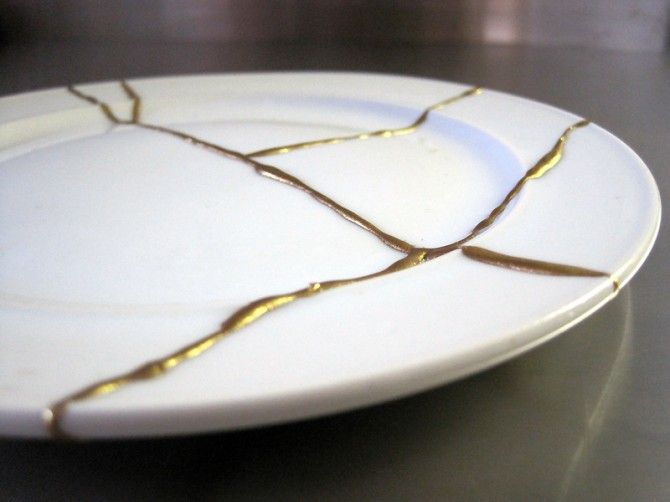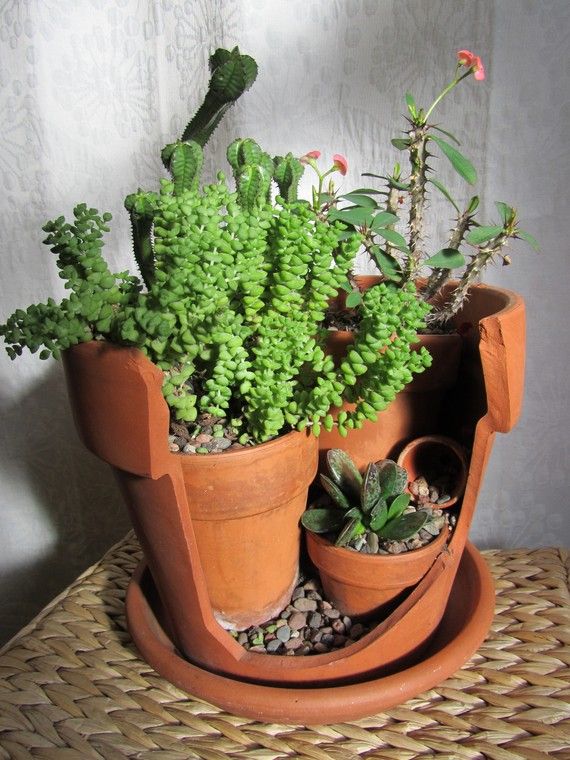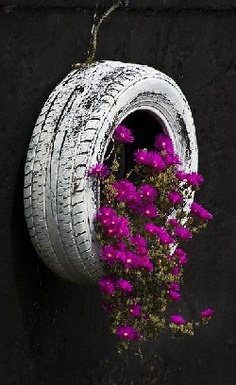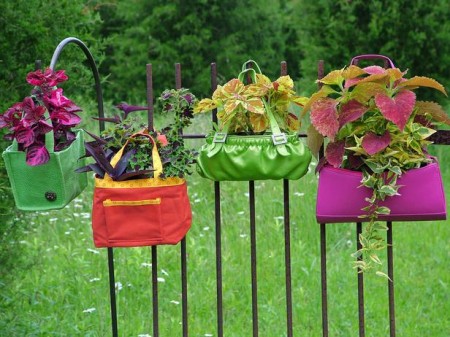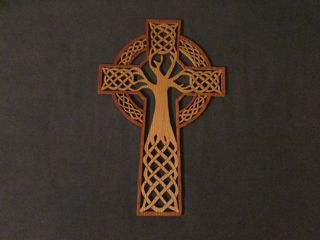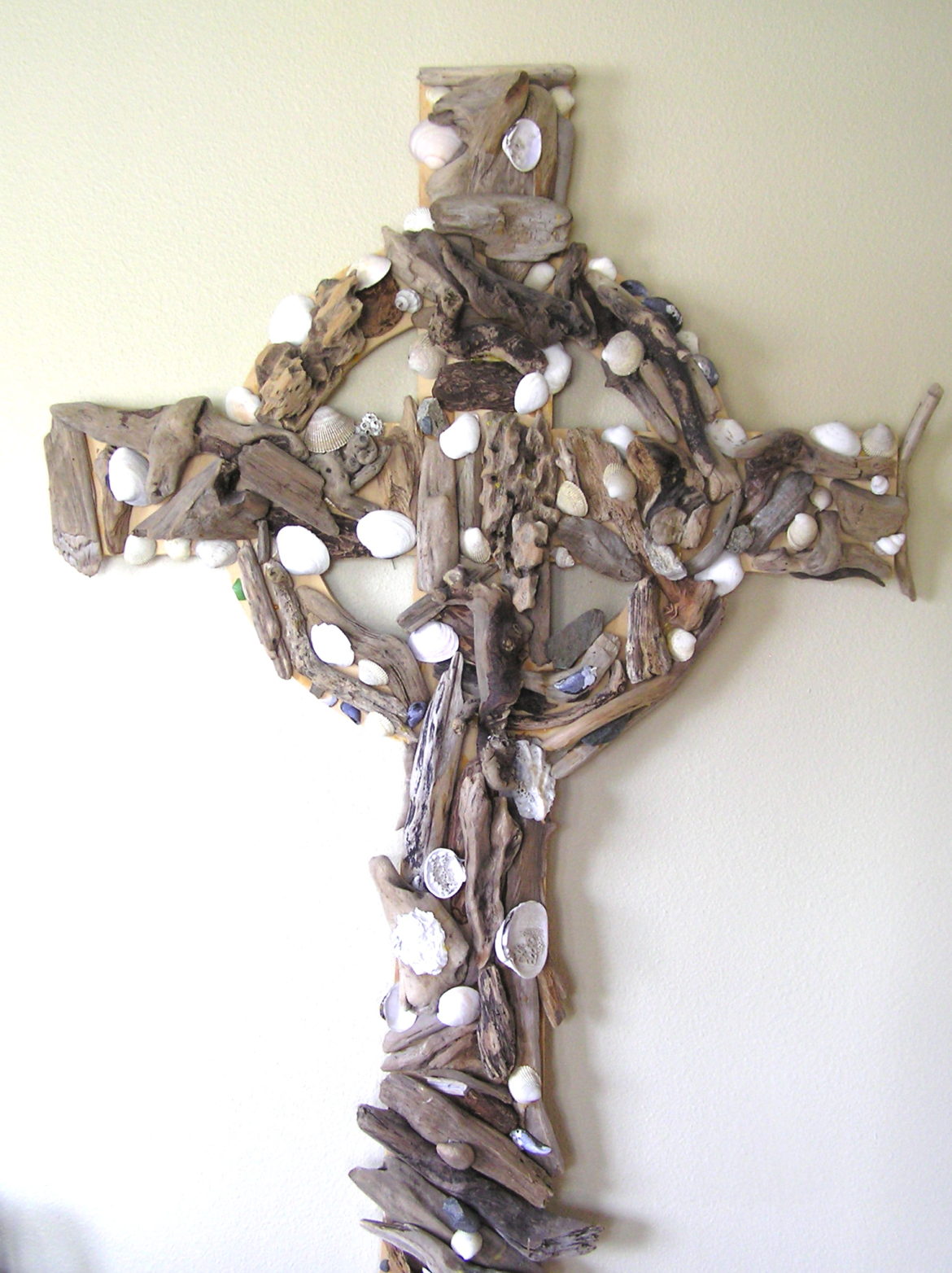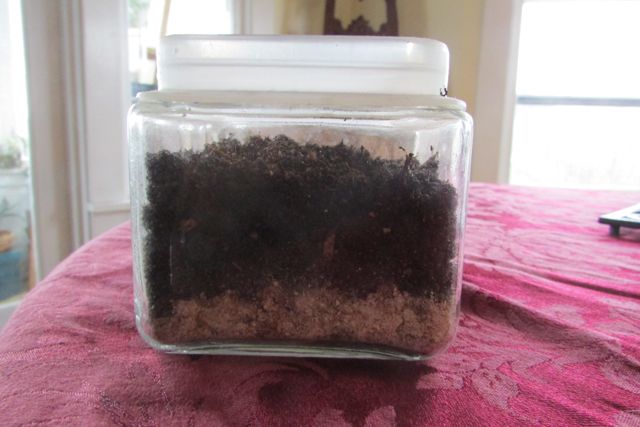Our preLenten retreat Return to Our Senses in Lent, is only a week away and Ash Wednesday is only a few days after that. Tom and I are heading off this morning for one of our quarterly prayer retreats. Not surprisingly, I am thinking a lot about the transformation I want to see in my own life during the season.
Part of what has struck me this morning is how easily we discard that which is no longer perfect or functional. Mending, repairing and reusing are lost arts. Yet there is beauty hidden in brokenness. God does not discard us because we are broken. Our remade selves are grounded in the transformation of our brokenness.
There is often more beauty in repaired or reused objects than in the original. Like in the Japanese art of Kintsugi in which the art of mending broken pottery with laquer resin sprinkled with powdered gold highlighting the brokenness. Repair can be beautiful. Repair can make things better than new.
We see it too in creative forms of recycling. Like this use of broken pots for planting.
And this creative use of an old tire – ugly and polluting in the environment – to make a planter
Check out these creative ideas too for new garden containers – or for storage of other items too.
What I have been thinking about is – If we can make such beauty from old, discarded items imagine what God can do with the broken areas of our life. Nothing should be discarded, everything can be made new.
This post is out of date. Please see our latest version.
Music is such a wonderful aid to meditation and reflection that I realize the need to help all of us find appropriate music to assist us in this. Obviously there are hundreds if not thousands of songs and musical pieces out there that would be appropriate so I have tried to post a sampling from different traditions. Please do add your suggestions in the comment section as this is another new resource list for me.
Here are some of the best resources (some outside the box) that I have found in the music area for Lent and Easter.
GIA Publications has a very rich array of music for the season.
Discipleship Ministries has some good music resources for Lent, mainly available as free downloads.
Paul Neeley posts extensively on music resources for all seasons of the church year. Check out his link to Lenten, Holy Week and Easter resources.
Gungor’s song “Beautiful Things” is a powerful song of brokenness and transformation
A beautiful Celtic tune “A Lenten Journey”
And a beautiful reflective song from one of my favourite musicians Jeff Johnson
Handel’s “Messiah” is now traditionally known as a Christmas piece but was originally written for Easter.
“Te Deum” – 5th Century is attributed to two Fathers and Doctors of the Church, St. Ambrose and St. Augustine and is one the most majestic chants in the Liturgy of the Church.
These Gregorian chants from Assisi are beautiful to listen to as a focus for reflection.
“The St. Matthew Passion”, is a sacred oratorio from the Passions written by Johann Sebastian Bach in 1727 for solo voices, double choir and double orchestra, with libretto by Picander. It sets chapters 26 and 27 of the Gospel of Matthew (in the German translation of Martin Luther) to music, with interspersed chorales and arias. It is widely regarded as one of the masterpieces of classical sacred music. If you choose to listen to this make sure you have plenty of time – it is over 2 hours long.
“All Glory Laud and Honour” is the traditional hymn to sing on Palm Sunday.
“The Power of the Cross” – A beautiful reflective hymn for Good Friday.
And another classic – “When I Survey the Wondrous Cross”.
“The Old Rugged Cross” – is another old favourite.
Check Out Other Godspace Resources:
A series on Lent and Creativity:
Get Creative and Play Games for Lent;
Five Ways to Foster Creativity in Kids During Lent
Seven Tips for Creating Sacred Space For Lent
Let’s Get Creative – Doodle Your Way Through the Lenten Calendar
Godspace Resources:
Lord Lead Us To Repentance – A Lenten meditation video produced in 2012
Were You There When They Crucified My Lord? This meditation is designed for Good Friday and does not have music.
An Invitation to Journey – A short Lenten meditation video 2008
Is This the Fast? – A Lenten meditation produced in 2008
All our Lenten and Easter resource lists, including FREE downloads can be found here
Celebrating Lent with kids is a passion for so many people and this list keeps expanding. I have tried to provide a number of activities and devotional suggestions from a variety of theological perspectives. If you know of “must have” additions, please let me know. You might also like to check out my Pinterest Board: Lent and Easter for Kids. I update this regularly throughout the year as I come across new resources that look interesting.
Enjoy!
Celebrating Lent With Kids
At Home Ideas by Lilly Lewin
- Holy Week Ideas for Families, Kids and Small Groups
- Prepping for Holy Week at Home
- Holy Week at Home: Praying with a Centerpiece
Activities and Resources
- Five Ways to Foster Creativity in Kids During Lent
- Lent Resources for Children Lenten Season from Michigan Conference – United Methodist
- Lent At Home kits by Illustrated Ministry
- Intentionally Celebrating Lent and Easter as a Family
- Praying in Color by Sybil Macbeth has amazing templates for Lent to color in and work great for kids!
- From Living Montessori Now – An extensive and very helpful list of resources
- Homegrown Catholic has a huge list of interesting activities for Lent and Easter.
- Catholic Icing has a range of activities for kids.
- Explore and Express has some beautiful ideas including a nature garden.
- Children’s Ministry has a variety of suggestions for Holy Week.
- Engraving a Tin Foil Cross – A Great activity for kids and adults.
- Making a Tiffany Style Cross.
- Create a Resurrection Garden.
- Stations of the Cross for kids – great suggestions for symbols as well as a printable stations.
- Share the Easter story through making Resurrection Rolls.
- Free printable available from Real Life at Home: 10 Lent and Holy Week Activities for Kids
- April Fiet has put together a great children’s sermon Making a Paper cross to teach Good Friday to children.
- I like this design for making a Stained Glass Cross that would make a great children’s activity.
- Or try a sand craft for Lent.
- A resource I used a couple of years ago: Wild Lent: Discovering God Through Creation.
Making Easter Eggs
I am not usually a fan of Easter egg hunts, which I often think move the emphasis of Easter from Christ to chocolates and sweets. However, I do think that the making of eggs can be a wonderful way to explain the Easter story to kids. Here are some possibilities:
- Learn Pysanky: the ancient Eastern European art of egg decorating.
- Make Resurrection eggs.
- Make your own chocolate eggs with fair trade chocolate.
- For more ideas check out my Pinterest Lent and Easter for Kids.
And some great videos to look at:
Dig Deep For Lent: In some ways, this is an advert for CAFOD but I love the idea of encouraging kids to think about other kids who lack resources and what they could do to help.
This cartoon version is interesting and would probably hold kids attention.
Please check out our complete list of Godspace resources for Lent through Holy Week
~This page is old. Please see our updated Resources for Lent~
With Lent fast approaching I realize that it is time to update my resource lists.
This is one of several posts on resources for the season that you might find helpful. You can check them all out here.
Enjoy.
My Favourite Resources Old and New
Here is a sampling of ideas from around the world some new, some from previous years, that I find myself revisiting each year.
A good place to start is with this mini Lenten retreat
Now check out the resources I have posted on Pinterest for Lent Easter and Pentecost. I add to these regularly so there are always new ideas to look at.
In 2013 Rachel Held Evans published a great list of 40 ideas for Lent that is still one of my favorites.
Cabad.org has an excellent outline for a Christian Seder celebration
Some great resources from Lent Event in Australia
The Episcopal Church has a great section on Lenten Resources. already updated for 2019
Growing a Rule of Life – a very interesting course that encourages us to develop a rule of life as a Lenten discipline. It uses garden metaphors and some fun exercises. I used this a couple of years ago and thoroughly enjoyed it.
And of course of Godspace we have several free downloads:
Maundy Thursday Love Feast and Liturgy
Godspace writer Lilly Lewin also has this excellent free download Experiential Stations of the Cross
And check out the other resource lists, videos and prayers accessed through our church calendar resource page.
Looking for A Little Fun During Lent?
Lent Madness. This looks like fun: 32 saints are placed into a tournament-like single elimination bracket. Each pairing remains open for a set period of time and people vote for their favorite saint. 16 saints make it to the Round of the Saintly Sixteen; eight advance to the Round of the Elate Eight; four make it to the Faithful Four; two to the Championship; and the winner is awarded the coveted Golden Halo.
Chalice Press has just sent me their 2018 Lenten materials including this helpful Lenten Colouring Book.
Another great resource is this: Twenty Reflective Movies for Lent
Litanies for Lent
I love this series of litanies for Lent and Easter by Fran Pratt:
Litany for Lent, Week 1 “Temptation”
Litany for Fat Tuesday
Litany for Ash Wednesday
Litany for Lent, Week 2 “Mercy”
Litany for Lent, Week 3 “Hunger”
Litany for Lent, Week 4 “Thirst”
Litany for Lent, Week 5 “Waiting”
Litany for Palm Sunday, “Fulfillment”
Litany for Good Friday, “Death”
Resurrection Sunday: “Life”
Need Some Daily or Weekly Reflections
Bread for the World always produces wonderful Lenten resources, as well as very helpful information on poverty that challenge us to face the issues of hunger.
Episcopal Relief and Development devotional focuses on creating economic opportunities and strengthening communities,with a particular focus on empowering women. They are available in both English and Spanish and can be downloaded for free.
From the Australian Board of Mission for 2017 Into the Desert
Another great list of resources that is so rich you can get lost in from anglicansonline.org
From Dust to Triumph: Reflections for a Holy Lent – an inspiring collection of Lenten reflections that you can read online.
Also from the Uniting Church Australia this excellent free download of Lenten reflections for 2019
Churches Together in Britain and Ireland have some good study courses available for Lent: Parables and Possessions a six-session study resource based on 2012 the Church of Scotland report of A right relationship with money.; Walking and Praying with Christians of the Middle East. and the 2016 addition Pilgrimage. In 2017 they have added Returning Home: Christian Faith in Encounter with other Faiths and for 2018 their emphasis is on Hope. I love the theme for 2019 The Mystery of God encouraging us to look more deeply into the wonder and mystery of God.
Biola University in 2015 started a great resource – The Lent Project with daily reflections
Want to Focus on Simplicity and Sustainability?
From Simple Living Works: Lets Get Ready for a Simpler Lent and Easter
Eco palms: The University of Minnesota Center for Integrated Natural Resources and Agricultural Management (CINRAM) is working together with the Rainforest Alliance TREES program and Smartwood to certify palms harvested from the forests of Mexico and Guatemala for sale to Christian congregations in the United States and Europe.
The Oil Lamp has shared several helpful links to sites that suggest ways to incorporate a carbon fast into your Lenten practices. I particularly enjoyed this link recommended by Archbishop Thabo Magkoba, convenor of the Anglican Environmental Network in South Africa: A Carbon Fast for Lent. They also have some good basic suggestions for a carbon fast here.
Earth Ministry’s LeAnne Beres wrote this helpful article about taking a Carbon fast a couple of years ago which includes links to other great resources.
Looking for A Devotional
This year I plan to use Walter Brueggemann’s A Way Other Than Our Own
You might also like to check out Richard Rohr’s Wondrous Encounters: Scriptures for Lent
Or The Little Book of Lent with a variety of reflections from authors such as Desmond Tutu, Sheila Cassidy and Rowan Williams
Renovare, one of my favourite spiritual formation sites has some excellent Lenten devotionals
Ave Maria Press has a broad array of Lenten resources available.
Chalice Press also has an excellent array of Lenten materials
Intervarsity Press also has a very expansive and important list of books for Lent.
Need Resources for Church Worship or Lenten Studies
Lent and Beyond – an Anglican prayer blog has some of the best reflections and devotionals around. I particularly enjoyed the Ash Wednesday index and Lent and Ash Wednesday Activities for Families
Presbyterian Mission Agency also has good resources for Lent.
Jonny Baker in the UK always has great resources available for worship. Here is his Lenten link
The Lenten resources at textweek.com as usual form one of the most comprehensive resource lists available.
From Australia: Per Crucem Ad Lucem.
In New Zealand Bosco Peters always has good resources listed
From Canada Prayer Eleven – Ideas for Lent
And from South Africa John Van deLaar at Sacredise is worth checking out
Work of the People has produced some great Lenten studies, reflections & video resources this year too.
The Ignatian Workout for Lent online retreat is well worth participating in.
“40 Lent: What do you give up when the world gives out?” From the Jesuits at Loyola Press. It’s a social media series focusing on the way a group of adults copes with the aftermath of a disaster.
Ann Voskamp also has a great idea for a family repentance box which she posted a couple of years ago.
I highly recommend the resources on the Busted Halo website for Lent.
Start with this 25 Great Things You Can Do For Lent watch this video and spend some time thinking about what you can do for Lent this year.
Please check out our complete list of Godspace resources for Lent through Holy Week including our free downloads.
Obviously this is not a comprehensive list so if you know of other resources that you think should be added please leave a comment here.
When I told my colleague Kristin King Carroccino about my ideas for starting a Lenten garden she sent me this article about what she and her family have done in the past. I love the way she incorporates her own need for transformation with that of the transformation that occurs in the garden.
A few years ago, in an attempt to illustrate to our children the message of Lent, a time of God working in the fertile soil of our hearts to grow something new and a time that we also remember the barren feeling of Jesus being in the tomb at the end of Holy Week, we purchased a square glass container from a local craft-making supply store with the intent to cultivate a simple garden. For the first couple of years, we simply added potting soil to the container, and then allowed it to remain dormant until about half way through Holy Week, when we added a sprinkling of wheat berries to the top half inch of soil, watered them, and then watched them sprout and burst forth into gangly life by Easter morning.
Then, my husband began the process of pursuing ordination as a priest in the Episcopal Church, and found himself volunteering to help with Ash Wednesday services one year at our local parish. Somehow, he managed to bring some leftover ash home later that evening around the time we were getting ready to put fresh, black soil into our Lenten glass container. We decided to place the ashes below the soil in the container, thus adding a silty grey layer below the weight of the blackness above. We often paused over the next few weeks to glance at the stark container on our family altar as we were vacuuming the living room or tossing a toy to one of our cats or watching the kids host an impromptu dance party.
The following year, my husband, now a seminarian, wasn’t able to produce a handful of ashes to bring home on Ash Wednesday, so we created our own by each writing on a piece of paper a habit or characteristic we would like to have transformed during Lent and then burning it outdoors in a large metal bowl. We collected the chunky ashes, which were more tiny bits of white paper than powdery dried palm leaf ashes from church, and made them the foundation of our glass container garden. Now we could even more vividly imagine the transformative process of God taking the parts of ourselves we wished to bury and miraculously turning that offering we gave into the new life of the wheat sprouts sending tenacious white roots down into the dark muck and stretching new green growth to the heavens. Humus offering us humans a glimpse of the Great Mystery.
Yesterday I read this very concerning article in the Huffington Post about Tom Perkins contention that people with more money should get more votes. His idea is that you only get to vote if you pay taxes and the more taxes you pay the more votes you get. He says that the rich are being threatened. Yet the facts don’t show that.
According to another article on CNN:
1. Workers are taking home their smallest slice of U.S. income on record: At around $15.8 trillion a year, the United States produces more in annual economic output than ever before, but it’s not the worker that’s benefiting. Instead, corporate profits now account for their largest slice of that pie on record, whereas the slice for workers has been steadily declining.
2. Inequality has widened: The recovery has been good to families earning more than $394,000 a year, but the other 99% of Americans have barely felt it.
Whereas income for the richest 1% had grown 31% from 2009 to 2012, income for the rest of Americans has barely budged in recent years, growing just 0.4% over the same time period.
That means the richest 1% of American families have captured 95% of the income gains in the recovery, according to economists at the forefront of income inequality research, Thomas Piketty and Emmanuel Saez.
The concerning thing to me is that the rich and powerful have more clout than ever. The influence of the Koch brothers on the recent government economic upset shows that. And through misinformation and media clout they can make us believe that their views are right.
So what does the Bible really say about wealth? That is not an easy question to answer and there are many interpretations of Jesus’ words on the subject. One thing I have noticed however is that when the rich interpret what Jesus says it usually justifies their wealth, when the poor interpret it usually emphasizes their exclusion.
How we interpret what the Bible says depends on who we stand with. Perhaps that is part of the reason Jesus encourages us to identify with the poor because when we do we really see his perspective not just on wealth but on life. Blessed are you who are poor for yours is the kingdom of God the Beatitudes tell us (Luke 6:20 NIV). Perhaps that is because only the poor really see the values and priorities of God’s kingdom. We need to see from the perspective of the poor in order to really understand what God wants to say. Unfortunately so much of what we interpret about money in the Bible tends to be from the perspective of the wealthy. And we want to believe it because consciously or unconsciously we hope that one day we too will be wealthy.
Ched Myer’s has really helped me understand this perspective. His perspective on The Parable of the Talents is both revealing and challenging. His views on Sabbath Economics have helped to transform my thinking and move away from the conditioning of the wealthy
We need to not just know what the Bible says but why we believe it. Matthew 6:24 tells us that we cannot serve both God and money. But we certainly keep trying.
It’s Valentine’s Day, to be honest not a celebration that I have ever really approved of. I see it as yet another commercial venture to encourage us to buy and consume more – especially chocolate. I struggle with it a lot because it seems to me that the love we celebrate on this day is the very antithesis of the love of God. It started out as a religious celebration commemorating the life of St Valentine, one of the early Christian martyrs but today is more a celebration of romantic love and another opportunity for the consumer culture to have us all out there buying lots of chocolates, roses and other gifts that we don’t really need. I was overwhelmed as I walked through the supermarket yesterday by the array of red flowers, red chocolate boxes and red cup cakes that were strategically placed to jump out at me as I entered the store. This is not what love is about.
And I struggle because most chocolate is not ethically produced. An article in Huffington post last year states:
According to an investigative report by the BBC, hundreds of thousands of children are being purchased from their parents or outright stolen and then shipped to Ivory Coast, where they are enslaved on cocoa farms. Destitute parents in these poverty-stricken lands sell their children to traffickers believing that they will find honest work in Ivory Coast and send some of their earnings home. The terrible reality is that these children, 11-to-16-years-old but sometimes younger, are forced to do hard manual labor 80 to 100 hours a week. They are paid nothing, receive no education, are under fed, and are often viciously beaten if they try to escape. Most will never see their families again.
But chocolate is good for us and it is easy to ignore its dark underside, especially on a day like this. And love is good for us. My husband Tom sees this as a day to affirm his love for me and for others, something that I always deeply appreciate. And God is a God of love. Affirming love for God, for each other and for God’s world are extremely important.
So what do we do about it? Here are some suggestions:
- Start the day by reading Paul’s wonderful description of love in 1 Corinthians 13. Read it in a few different versions (available at Biblegateway.com)
- Read some of the wonderful love poems of Christian saints. My favourite is Fall in Love by Father Pedro Arrupe. I also love this reflection on How to Love God by Mother Teresa
- Be generous with your love. The New American Dream suggests rebooting Valentine’s Day as Generosity Day, seeing it not as a day to receive gifts of love but to give them. They suggest saying “yes” every time you are asked for a donation, a handout or a request. Give a $5 tip for a $2 cup of coffee. Bring in lunch for your co-workers. Certainly something to consider.
- Be generous with your gratitude. I think this is also a good day to show gratitude to those who love you and whom you love. Make phone calls to friends you have not spoken to for a while. Tell them how much you appreciate them.
- Reach out to those who produce your chocolate and other favourite Valentine’s gifts. Watch The Dark Side of Chocolate with a group of friends and consider ways to make a difference in the lives of those who suffer for our indulgences.
Let me know what you plan to do this Valentine’s day in the spirit of the love of God?
As an Amazon Associate, I receive a small amount for purchases made through appropriate links.
Thank you for supporting Godspace in this way.
When referencing or quoting Godspace Light, please be sure to include the Author (Christine Sine unless otherwise noted), the Title of the article or resource, the Source link where appropriate, and ©Godspacelight.com. Thank you!

